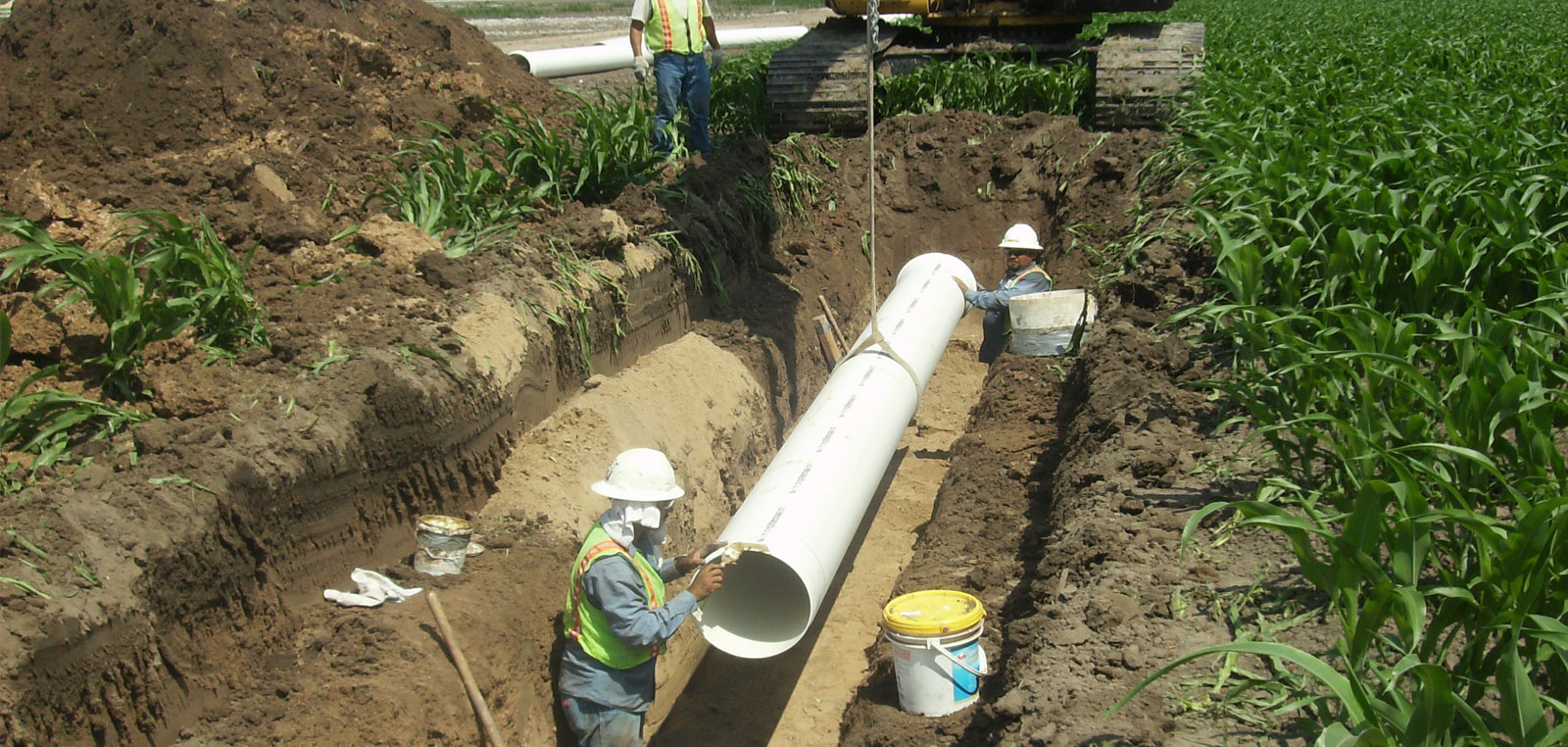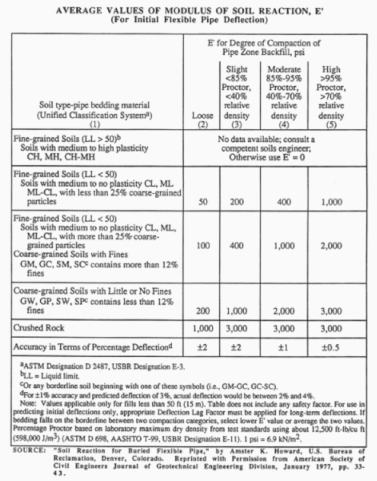
What is flexible conduit deflection and how is it calculated?
Flexible pipe derives its soil load carrying capacity from its flexibility. Under soil load, the pipe tends to deflect (reduction of pipe diameter in the vertical direction), thereby developing passive soil support at the sides of the pipe. At the same time, the ring deflection relieves the pipe of the major portion of the vertical soil load, which is then carried by the surrounding soil through the mechanism of an arching action over the pipe. Allowable limits of deflection have been set by both ASTM (7.5%) and AWWA (5%).
The Modified Iowa Equation is used for predicting deflection in buried flexible pipe:
![]()
Where:
DL = Deflection Lag Factor=1.0 (Typical)
K = Bedding Constant=0.1 (Typical)
P = Prism Load=Weight of soil over pipe
W' = Live Load
E = Modulus of Elasticity=400,000 psi minimum for PVC
DR = Dimension Ratio (OD/t)
E' = Modulus of Soil Reaction

This final parameter required to determine predicted pipe deflection is the Modulus of Soil Reaction. Amster Howard, of the United States Bureau of Reclamation, compiled a table of average E' values for various soil types and densities.
